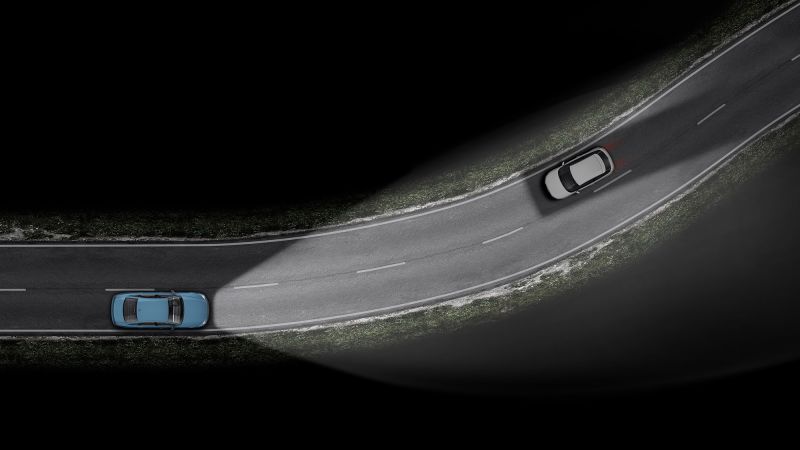
The Future of Headlights: Adaptive Driving Beam Technology

Discover the revolutionary technology of adaptive driving beam headlights that could change the way we drive at night, providing enhanced visibility without blinding other drivers. Explore the current state of ADB technology and the regulatory challenges hindering its widespread adoption in the US.
The Evolution of Headlight Technology
Imagine a world where driving at night is as clear as day, with headlights that illuminate the road ahead without dazzling oncoming traffic. In regions like Europe and Asia, this futuristic vision is a reality thanks to adaptive driving beam (ADB) headlights. Unlike traditional headlights, ADB technology dynamically shapes light beams to avoid blinding other drivers while ensuring optimal visibility for the driver.
This aerial drone photo shows a car driving on a road at night with headlights shadowing a vehicle on the road.
ADB headlights have been a staple in global markets for years, with features like light projection and symbol guidance enhancing the driving experience. However, the United States has yet to embrace this cutting-edge technology due to regulatory hurdles and compliance challenges. Despite advancements in ADB-enabled luxury vehicles, widespread adoption in the US remains a distant prospect.
The concept of ADB headlights goes beyond mere illumination; it represents a shift towards safer and more efficient nighttime driving. By intelligently adjusting light patterns to suit road conditions and traffic scenarios, ADB headlights offer a glimpse into the future of automotive lighting technology.
Regulatory Roadblocks and Industry Challenges
The journey towards integrating ADB headlights in the US has been fraught with regulatory complexities and industry resistance. While automatic high beams provide a semblance of adaptive lighting control, true ADB functionality remains a rarity in American vehicles.
Recent safety regulations aimed at permitting ADB technology in the US have faced backlash from automakers and safety advocates. The stringent requirements set by the National Highway Traffic Safety Administration pose significant barriers to implementing ADB headlights effectively. As a result, the road to widespread ADB adoption in the US is paved with obstacles and uncertainties, delaying the potential benefits of this innovative lighting solution.
Navigating the Future of Automotive Lighting
Despite the current hurdles, the automotive industry remains optimistic about the eventual integration of ADB headlights in American vehicles. Leading manufacturers and safety organizations are advocating for regulatory reforms to streamline the approval process for ADB technology.
The debate between vision enhancement and glare reduction underscores the complexity of ADB implementation. While concerns about glare are valid, proponents of ADB emphasize its ability to maximize visibility and enhance safety on the road. Balancing these competing priorities will be crucial in shaping the future of automotive lighting standards in the US.







